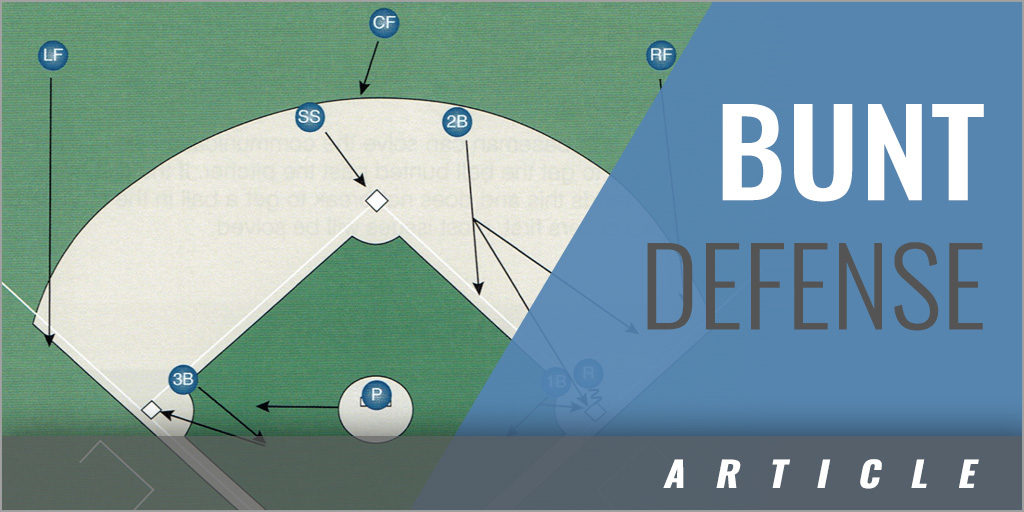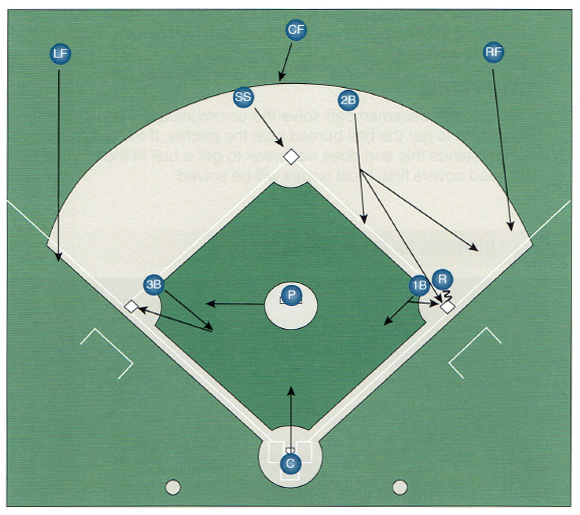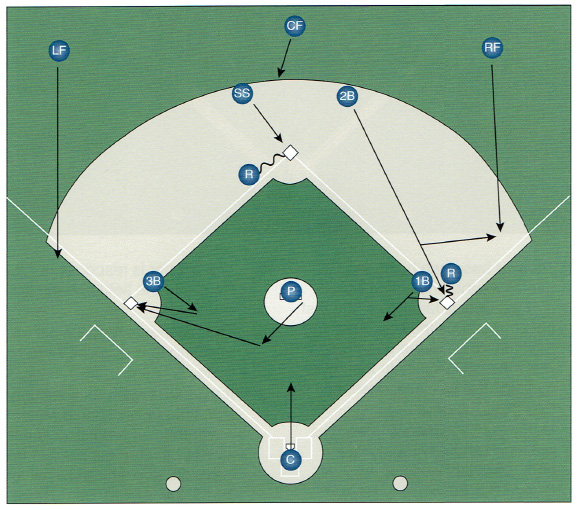|
By: Kenny Thomas and DJ King Originally Published in: Baseball - Steps to Success Provided by: Human Kinetics Defending the bunt can make or break a team defensively. Teams that can control the baseball and get an out will have much more success than those that are constantly out of position and do not control the baseball. Bunting is usually used in sacrifice situations when an offense is willing to give up an out to advance the base runner or base runners. These situations typically occur late in a game with a runner on first or second, or runners on first and second with zero outs. By sacrificing a runner into scoring position, the offense assumes that a base hit will then score that runner. By sacrificing a runner from second to third, the offense can then score in various ways other than a base hit, such as a sacrifice fly. In addition, some hitters might use a bunt as a way to get on base outside of these typical sacrifice situations. Here we discuss defending the bunt with runners on first (figure 9.1), defending the bunt with runners on first and second (figure 9.2) and defending against a bunt for a hit (figure 9.3). Figure 9.1 RUNNER ON FIRST
MISSTEP If the ball is bunted in the triangle between the pitcher, first baseman, and second baseman, communication is often the misstep that leads to issues. CORRECTION The second baseman can solve the communication issue if his first priority is to get the ball bunted past the pitcher. If the first baseman understands this and does not break to get a ball in the triangle but instead covers first, most issues will be solved. Figure 9.2 RUNNERS ON FIRST AND SECOND
MISSTEP A common misstep is a bad read by the third baseman on a ball that the pitcher cannot field. He may also charge too soon with a left-handed pitcher on the mound. CORRECTION If the third baseman has any doubt about whether the pitcher can field the ball, he should charge. Remember the importance of getting an out. A left-handed pitcher typically finishes the pitch by falling toward the third-base side, so he can cover more area and does not have to spin to throw to third. Figure 9.3 BUNT FOR A HIT
MISSTEP In do-or-die situations for the third baseman, overthrows are common. CORRECTION The second baseman and right fielder should move behind the first baseman to back up on a potential overthrow. |










